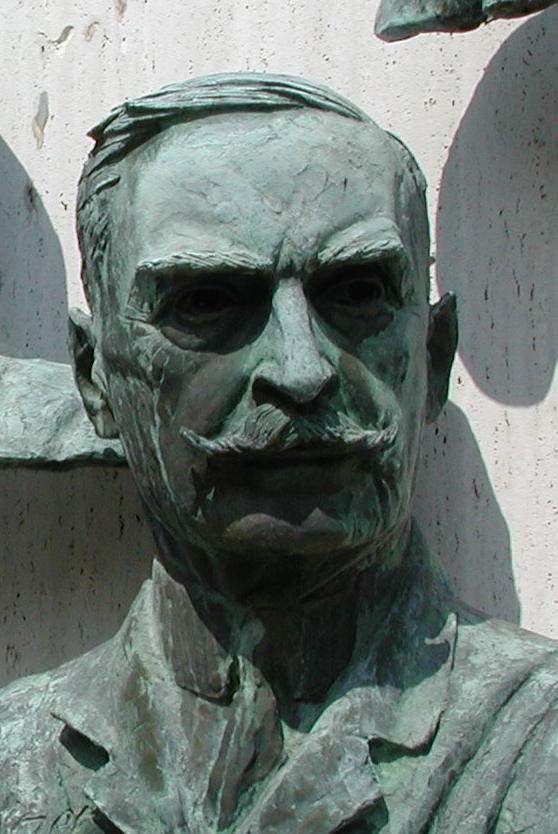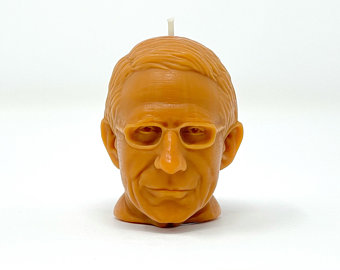Karl Landsteiner – discovered poliovirus, the rhesus factor, described as the father of transfusion medicine
Karl Landsteiner ForMemRS (14 June 1868 – 26 June 1943) was an Austrian-born American biologist, physician, and immunologist. He distinguished the main blood groups in 1900, having developed the modern system of classification of blood groups from his identificat
Nepenthesin (and the carnivorous plants it comes from)
Nepenthesin (also spelled nepenthacin or nepenthasin) is an aspartic protease of plant origin that has so far been identified in the pitcher secretions of Nepenthes and in the leaves of Drosera peltata. Discovery In the late 19th century, Sydney Howard Vines showed that the pitcher flui
Tubulin alpha-1A chain
Tubulin alpha-1A chain is a protein that in humans is encoded by the TUBA1Agene.[5][6][7] Background Tubulin alpha-1A chain is an alpha-tubulin that participates in the formation of microtubules – structural proteins that participate in cytoskeletal structure. Spe
Syncytin-2 also known as endogenous retrovirus group frd member 1
Syncytin-2 also known as endogenous retrovirus group FRD member 1 is a protein that in humans is encoded by the ERVFRD-1 gene.[5] This protein plays a key role in the implantation of human embryos in the womb.[6] This gene is conserved among all primates, with an estimated a
Syncytin-1 also known as enverin
Syncytin-1 also known as enverin is a protein found in humans and other primates that is encoded by the ERVW-1 gene (endogenous retrovirus group W envelope member 1). Syncytin-1 is a cell-cell fusion protein whose function is best characterized
Triiodothyronine, aka T3
Triiodothyronine, also known as T3, is a thyroid hormone. It affects almost every physiological process in the body, including growth and development, metabolism, body temperature, and heart rate. Bowen, R. (2010-07-24). “Physiologic Effects of Thyroid Hormones”. Colorado State
Calcitonin
Calcitonin is a 32 amino acid peptide hormone secreted by PARAFOLLICULAR CELLS (also known as C cells) of the thyroid (or endostyle) in humans and other chordates in the ultimopharyngeal body. It acts to reduce blood calcium (Ca2+), opposing the effects of PARATHYROID HORMONE (PTH). I
Melanin-concentrating hormone (MCH) aka PMCH
Melanin-concentrating hormone (MCH), also known as pro-melanin stimulating hormone (PMCH), is a cyclic 19-amino acid orexigenic hypothalamicpeptide originally isolated from the pituitary gland of teleost fish, where it controls skin pigmentation. Barson JR, Mo
Oxytocin
Oxytocin (Oxt or OT) is a peptide hormone and neuropeptide normally produced in the hypothalamus and released by the posterior pituitary. Gray’s Anatomy: The Anatomical Basis of Clinical Practice (41 ed.). Elsevier Health Scienc
Prolactin (PRL)
In mammals, prolactin is associated with milk production; in fish it is thought to be related to the control of water and salt balance. Prolactin also acts in a cytokine-like manner and as an important regulator of the immune system. It has important cell cycle-related functions as a growth-, diffe
Chymase and Chymosin – Rumored To Be Synonyms (and a little renin and rennin)
Chymase Alternative name for chymosin [“chymase .” A Dictionary of Food and Nutrition. . Encyclopedia.com. 25 Aug. 2022 https://www.encyclopedia.com] Mast Cell Chymase and Tryptase and some MMPs Chymase and tryptase are packaged in secret
Andreas Vesalius (1514 – 1564) was a 16th-century anatomist, physician, and author who is often referred to as the founder of modern human anatomy
Andreas Vesalius (Latinized from Andries van Wezel) (31 December 1514 – 15 October 1564) was a 16th-century anatomist, physician, and author of one of the most influential books on human anatomy, De Humani Corporis Fabrica Libri Septem (On the fabric of the human body
What Is Metalloproteinase?
Metalloproteinase – the name alone screams “I’m here to ruin everything” – is a feral pack of enzymes armed with metal claws (zinc, mostly, because it’s the shiniest weapon in the elemental arsenal) that shred proteins like they’re auditioning for a slasher flick. These molecul
Lipofuscin is the name given to fine yellow-brown pigment granules composed of lipid-containing residues of lysosomal digestion and considered to be one of the aging or “wear-and-tear” pigments
Lipofuscin is the name given to fine yellow-brown pigment granules composed of lipid-containing residues of lysosomal digestion.[1][2] It is considered to be one of the aging or “wear-and-tear” pigments, found in the liver, kidney, heart muscle, retina, adrenals, nerve cell
What is the difference between teratogenic and embryotoxic?
Embryotoxicity is any morphological or functional alteration caused by chemical or physical agents that interferes with normal growth, homeostasis, development, and differentiation of fetus. Gametogenesis, Fertilization and Early Development – Environmental Contaminants on Embr





